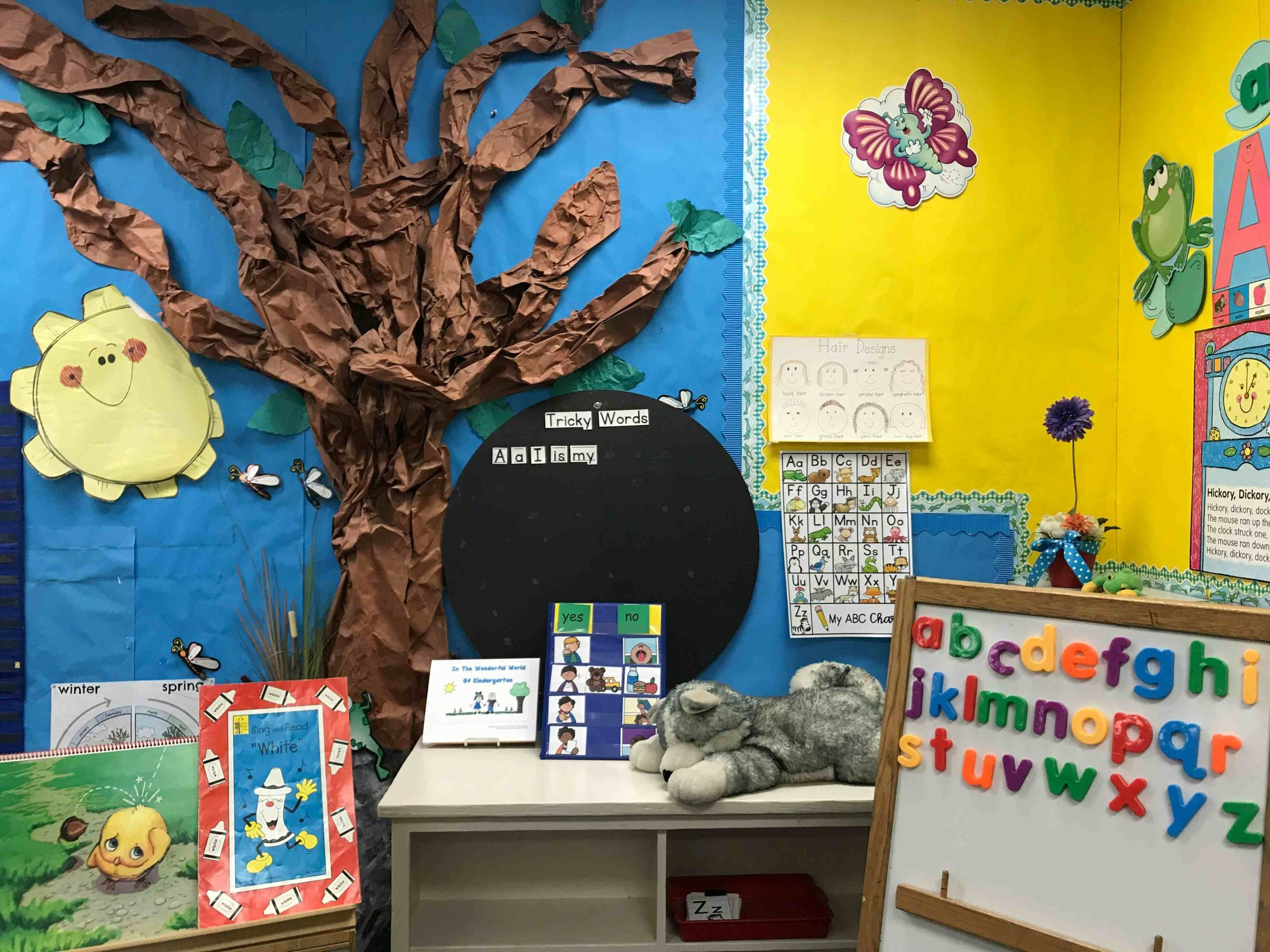
What Justifies Decorating Kindergarten Classrooms? Creative and Imaginative
We all understand the significance of the learning environment as educators. A well-designed classroom can significantly impact the learning and development of preschoolers. Adding decorations to the classroom can make it more interesting and encouraging. This article will discuss the advantages of creative and imaginative decorations, why kindergarten classrooms should be adorned, and provide decorating advice to motivate preschoolers to study and develop.
Importance of Classroom Decoration
Decorating Kindergarten Classrooms: How Important Is It?
The decor in a kindergarten classroom can enhance learning and creativity. Preschoolers experience awe and excitement in a creatively furnished classroom, which encourages their enthusiasm for learning. Additionally, it fosters a sense of pride and responsibility, resulting in a more positive attitude toward learning. Classroom decoration contributes to the feeling of organization and structure, providing preschoolers with a better sense of schedules and expectations. By designating specific areas for various activities, such as reading nooks and art corners, preschoolers feel safer and more at ease in their learning environment. Lastly, diverse and inclusive decorations contribute to a friendly and inclusive atmosphere, fostering a sense of belonging and respect for diversity.
Advantages of Creative Decor
The Advantages of Creative and Imaginative Decorations
A kindergarten classroom should be adorned with inventive and unique items. Creative decorations stimulate preschoolers’ imaginations and encourage curiosity and experimentation. Fun and vibrant decorations make preschoolers feel more at home and inspired to learn. Imaginative and artistic decorations also support the development of critical thinking and problem-solving abilities. Exposure to novel and distinctive decorations inspires preschoolers to think outside the box, fostering curiosity and discovery. Furthermore, creative decorations support social and emotional growth, making preschoolers feel more at ease and confident in their interactions with others.
Decorating Ideas for a Kindergarten Classroom
Decorating Ideas for a Kindergarten Classroom
Here are some ideas to creatively and imaginatively decorate your kindergarten classroom:
- Create a Theme: Choose themes like nature, space, or the ocean to make the classroom more interesting.
- Utilize Vibrant Colors: Use eye-catching posters, banners, and artwork to awaken preschoolers’ senses.
- Include Diverse and Inclusive Elements: Ensure your classroom decor represents the varied origins and experiences of your preschoolers.
- Establish Dedicated Areas: Designate spaces for reading nooks, painting corners, and science stations to create a sense of organization.
- Use Interactive Decorations: Include sensory boards and instructional activities to encourage critical thinking and problem-solving.
Remember, decorating a classroom involves more than aesthetics; it creates an environment that encourages preschoolers’ learning and growth. Thoughtful classroom design and imaginative decorations can inspire toddlers to explore and experiment.
Original and Artistic Décor
The Value of Original and Artistic Décor in Kindergarten Classrooms
Preschoolers benefit greatly from inventive and artistic classroom decorations in kindergarten. Aesthetically engaging, interactive, and themed decorations can create a stimulating and engaging learning environment. Themed classrooms, such as a jungle or space theme, foster enthusiasm and wonder among preschoolers. Interactive displays, incorporating magnets and shapes, enhance fine motor skills and hands-on learning.
Inclusive and Diverse Décor
The Advantages of Inclusive and Diverse Décor in Kindergarten Classrooms
In addition to inventive and artistic decorations, kindergarten classrooms should feature diverse and inclusive décor. Preschoolers feel more connected and positive about themselves when they see diverse elements in the classroom. Diverse and inclusive decorations, including books, toys, posters, and artwork, contribute to positive self-identity and a sense of belonging. Research indicates that exposure to diverse backgrounds enhances empathy and understanding of different perspectives, supporting social and emotional development.
More Decorating Ideas
Decorating Ideas for a Kindergarten Classroom
Decorating a kindergarten classroom can be an enjoyable and satisfying experience with a little imagination and forethought. Here are some ideas:
- Use Bright Colors: Create a visually appealing environment with vibrant posters, artwork, and decorations.
- Set up a Themed Classroom: Foster excitement by choosing a preschool-friendly theme and incorporating decorations that support the theme.
- Include Interactive Displays: Enhance fine motor skills and hands-on learning with wall displays using magnets, shapes, and other interactive items.
- Include Diverse and Inclusive Decorations: Use signs, artwork, books, and toys that represent various cultures and backgrounds to establish a friendly and inclusive learning environment.
Preschoolers can participate in the decorating process, fostering a sense of pride and ownership in their learning space. Involve them in choosing decorations and creating artwork to be displayed. Kindergarten classroom decoration goes beyond aesthetics; it plays a crucial role in supporting preschoolers’ learning and development.
Contribution of Classroom Decorations
The Contribution of Classroom Decorations in Kindergarten to Learning and Development
Kindergarten classroom decorations are crucial for the learning and development of preschoolers. A visually interesting and engaging classroom stimulates preschoolers’ curiosity and encourages hands-on learning. Creative and artistic decorations support cognitive growth and reinforce key concepts. In addition to cognitive benefits, diverse and inclusive decorations contribute to social and emotional development. Preschoolers’ positive self-identity and sense of belonging are enhanced by seeing themselves and others represented in the classroom. Classroom settings influence toddlers’ behavior and engagement, with well-organized and age-appropriate classrooms resulting in increased engagement and fewer behavioral issues.
Conclusion
In conclusion, unique and artistic kindergarten classroom decoration significantly benefits preschoolers. It fosters a stimulating and engaging learning environment, promoting education, creativity, social and emotional growth, and a sense of community. By implementing thoughtful decorating ideas, educators can create a friendly and motivating learning environment. Kindergarten classroom decorations play a crucial role in supporting preschoolers’ short-term and long-term outcomes. Teachers can encourage exploration and experimentation by incorporating vibrant colors, interactive decorations, and diverse elements. An aesthetically pleasing and engaging learning environment can be created with a little creativity and resourcefulness, fostering a lifelong love of learning in preschoolers.


